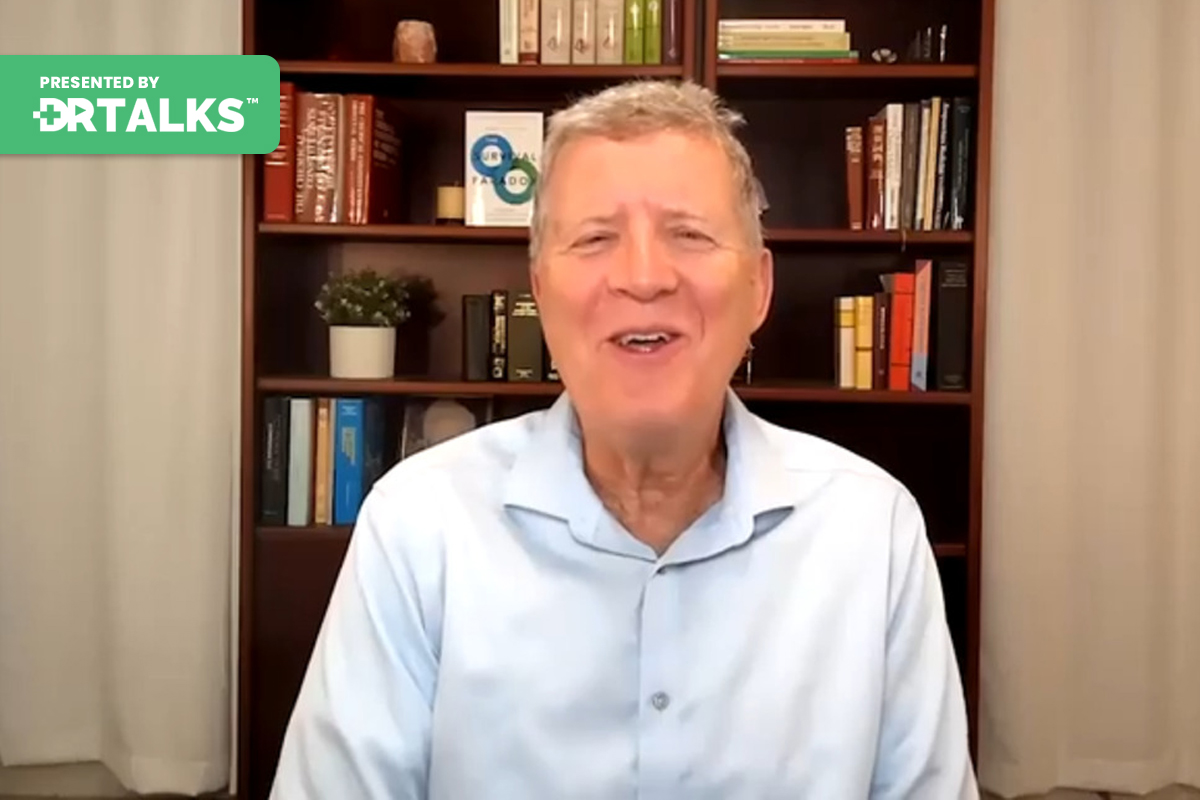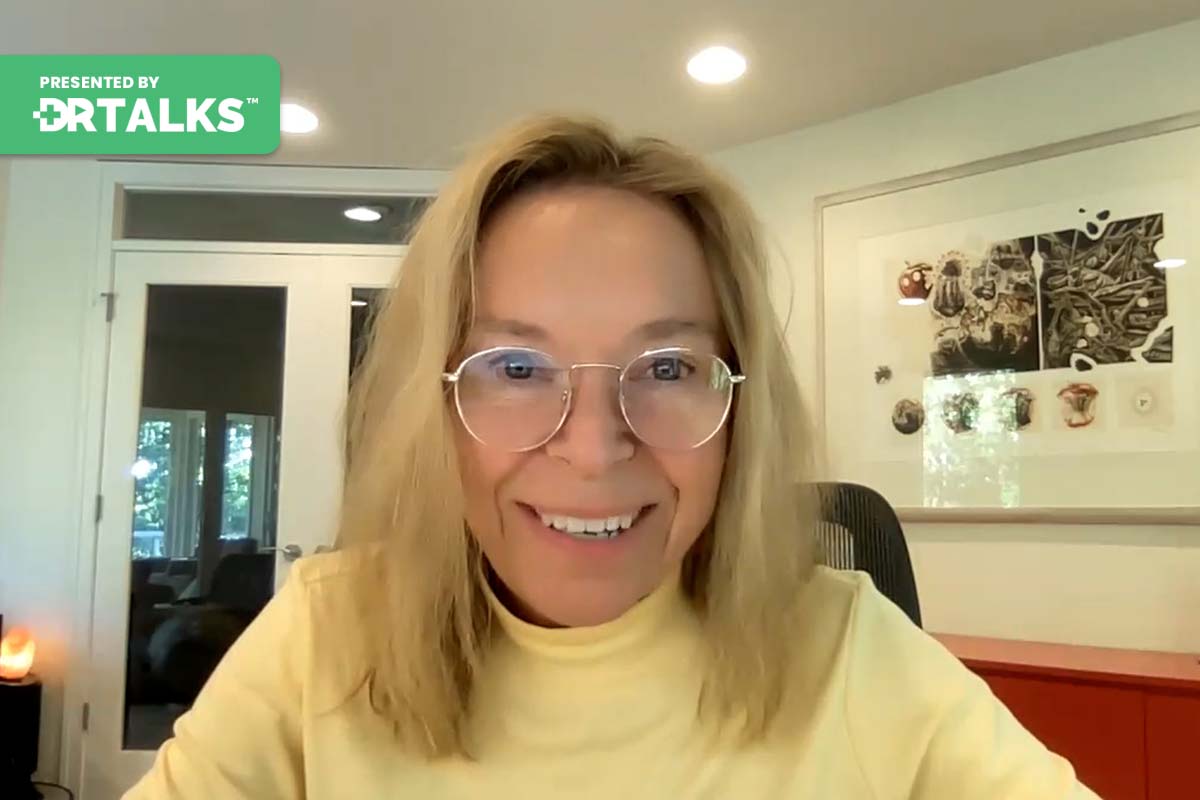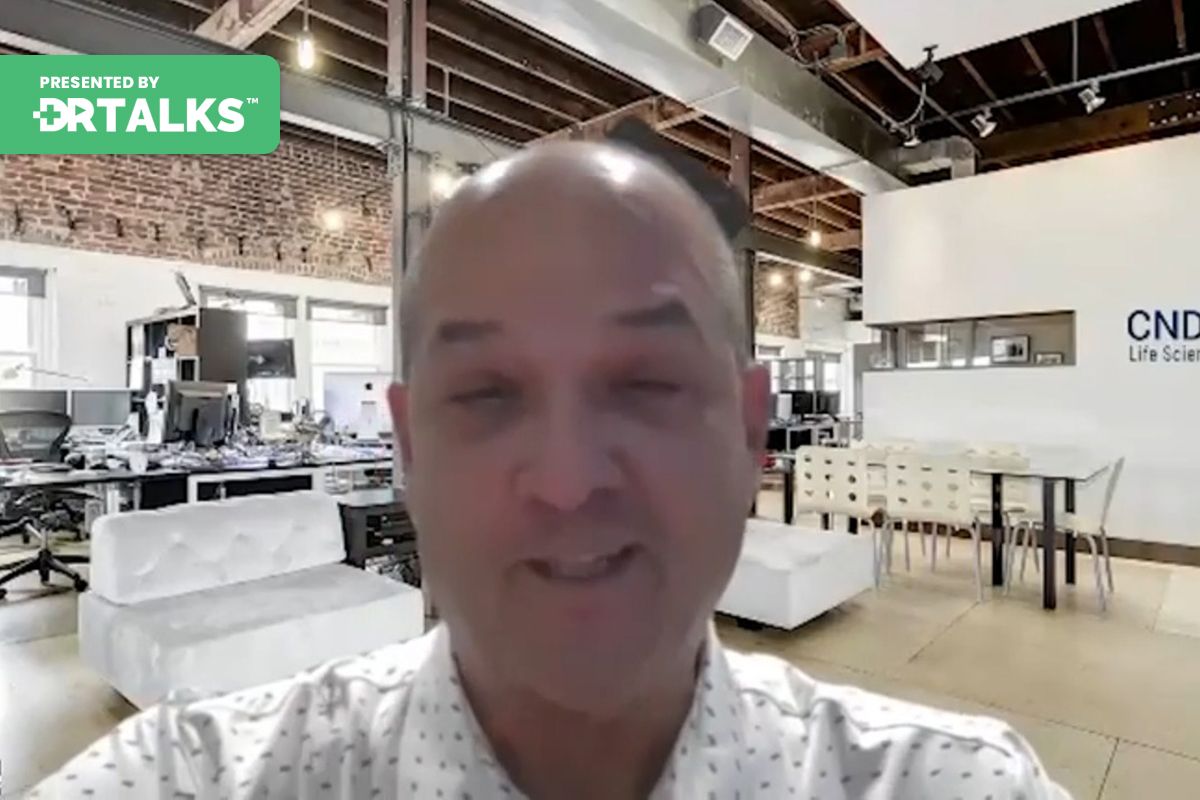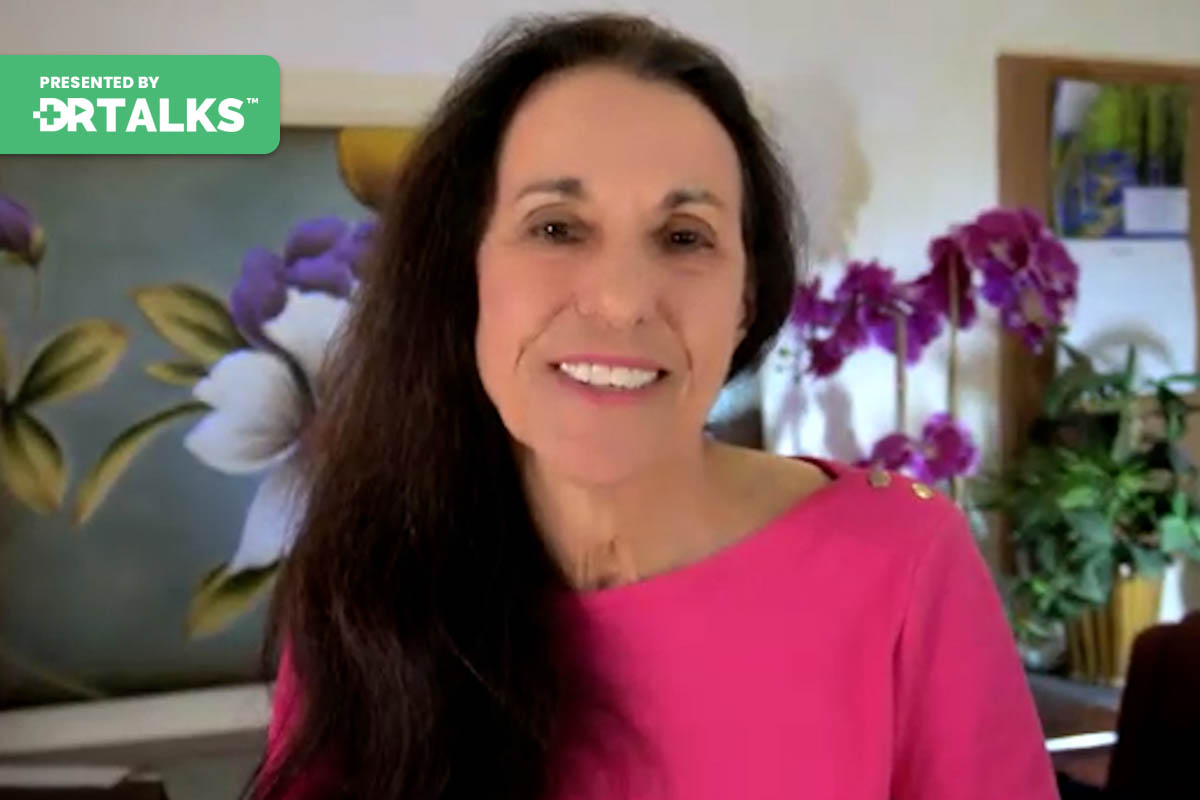Join the discussion below
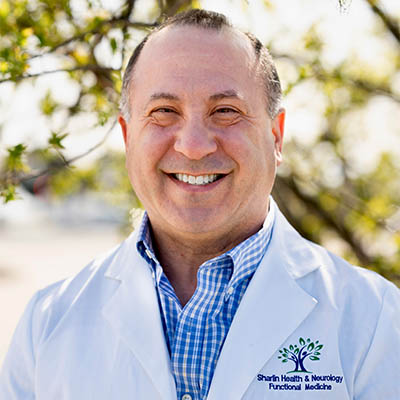
Kenneth Sharlin, MD, MPH, IFMCP
Kenneth Sharlin, MD, MPH, IFMCP, is a board-certified neurologist, consultant, functional medicine practitioner, Assistant Clinical Professor, researcher, author, and speaker. His medical degrees are from Emory University, The University of Virginia, and Vanderbilt University. His functional medicine certification is through The Institute for Functional Medicine. He is author of the... Read More
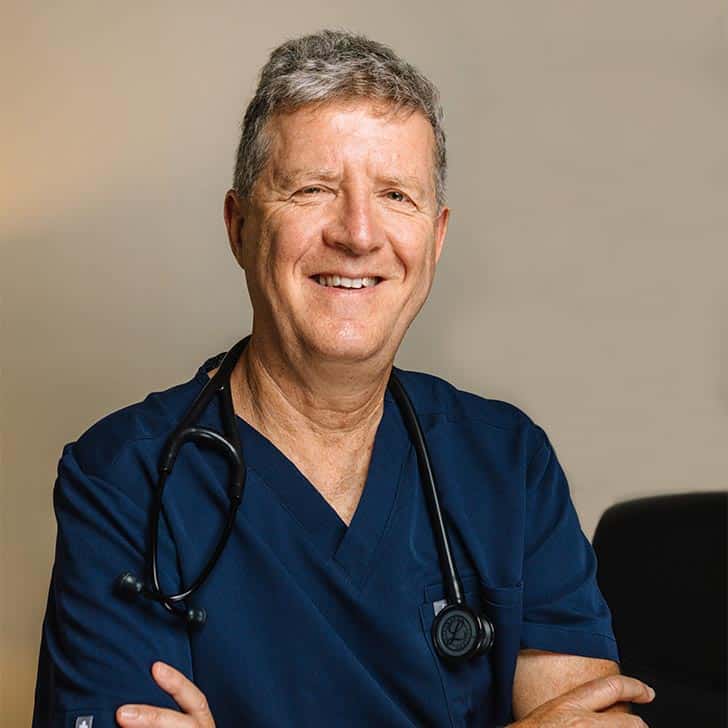
Isaac Eliaz, MD, MS, LAc has been a pioneer in the field of integrative medicine since the early 1980s, with a focus on cancer, immune health, detoxification and mind-body medicine. He is a respected formulator, clinician, researcher, author and educator, and a life-long student and practitioner of Buddhist meditation. With... Read More
- Delve into the survival paradox and its profound effects on the body
- Understand the significance of Galectin 3 in health and disease
- Learn how ammonia in the brain influences glutamate regulation and the basal ganglia
- This video is part of The Parkinson’s Solutions Summit
Related Topics
Acceptance, Autonomic Nervous System, Cellular Biology, Cellular Metabolism, Central Focus, Chronic Disease, Cytokine Storm, Dietary Principles, Dysregulation, Ego, Feelings, Fibrosis, Food, Glial Cells, Healing Capacity, Imbalance, Inflammation, Inflammatory Diseases, Innate Weaknesses, Integrative Neurology Program, Lack Of Purpose, Lifestyle, Lifestyle Principles, Loneliness, Modified Citrus Pectin, Neurology, Organ Dysfunction, Paradox, Parkinsons, Parkinsons Disease, Sedentary Lifestyle, Sleep Disruption, Supplement Principle, Survival, Survival Paradox, Sympathetic Nervous System, Thoughts, Transform Approach To LifeKenneth Sharlin, MD
I’m Dr. Ken Sharlin. Welcome to the Parkinson Solutions Summit. I’m your host for this summit. We’ve been interviewing some wonderful speakers, and today I have the pleasure of interviewing Dr. Isaac Eliaz. Dr. Eliaz has worn many hats and continued to do so in his career as a physician. Author, researcher. His name has been associated with institutions like Harvard University and the National Institutes of Health. He has a clinic in California, the Army Tampa Medical Clinic, and is doing some fantastic work in apheresis. Maybe we’ll get to talk about it. He’s also the author of a book that will be definitely the topic of our conversation today, The Survival Paradox. But Dr. Lyons, welcome to the Parkinson’s Solutions Summit. I’m so happy to have you here. Thank you so much.
Isaac Eliaz, MD, MS, LAc
As clinicians, we always thought about going to a clinic. We have already talked about so many things. Yes. Thank you for having me. I am. I’m thrilled to be a part of such an important summit with such a high caliber of interviewees and interviewers. Yes, it’s such an important topic where our approach has so much to offer. Thank you for having me.
Kenneth Sharlin, MD
Dr. Eliaz, you have such an esteemed career. Tell me about how you got into this. How did integrative medicine become part of the story of what you do, and where has it taken you?
Isaac Eliaz, MD, MS, LAc
Well, my journey with healing and integrative approaches started at the age of 15, when I was in South Korea. It’s a privilege to train with the Korean national team in Taekwondo because they need to know this. They were my friends, so I got to train, got into martial arts and yoga, and became a yoga instructor and yoga teacher. When I went to medical school in Israel for seven years, I knew I’d do holistic medicine. To kind of survive medical school. But in the afternoons, I would teach yoga, do shiatsu and acupuncture, and create my own school for Chinese medicine. Parallel to wisdom, I studied Chinese medicine and biology. Then I came to the United States, where I got a master of science in Chinese medicine with an interest very early on in oncology. Parallel to this, I got very involved with Tibetan Buddhism and meditation, and I spent decades training and practicing meditation with the greatest masters and being their doctor. All of these got integrated into my medical care: being a doctor, being a healer, teaching meditation and healing, being a bona fide researcher with active, very large NIH grants in breakthrough research that relates to inflammation and the connotations with neurological illnesses and diseases, and developing the use of apheresis. This is what they call me in the industry: a disruptor, especially with a focus on inflammatory illnesses. This is my journey. I’m getting close to my mid-sixties and being very excited. I feel a responsibility to share these decades of in-depth studies, inner reflection, and clinical experience with thousands of people and the Survivor paradox. My book is about this simplified term that came up that expresses a much bigger concept, a new paradigm in understanding health and disease. so I love talking about it. get excited about.
Kenneth Sharlin, MD
Let’s dive into it. It is your bestselling book, The Survival Paradox, that sheds new light on inflammatory diseases and how they develop. What is the survival paradox? What is it?
Isaac Eliaz, MD, MS, LAc
Dr. Sharlin, in integrative medicine, we noticed for a long time that, following the COVID epidemic, we recognized it as a driving force of inflammation of the cytokine storm in many diseases, acute and chronic. but inflammation is not the cause of disease. It’s a result. It’s the body’s expression of an imbalance. The imbalance is a survival paradox. It’s a paradox because we are wired to survive. Every cell in our body is wired to survive on its own and as a community. But this survival drive that is inherent in us is the same force that drives inflammation, early aging, degenerative diseases, and cancer in children in our lives, and it also causes us difficulties in suffering because it’s innate in us. It is triggered automatically through the autonomic nervous system and the sympathetic nervous system.
Kenneth Sharlin, MD
Yes.
Isaac Eliaz, MD, MS, LAc
Either responds with fighting, which equates to inflammation, or responds with hiding and running your way, which equates to building a microenvironment, a boundary, a shield, and biofilm creation. That leads, of course, to fibrosis and organ dysfunction. This is an autonomic nervous system, the sympathetic system. If we live a more balanced life, we take a deep breath. We relax, and we balance it. But once the biochemical system gets started, we get a very small trigger. In this alarming survival paradox, molecules and proteins will start a cascade of devastating effects that will affect every system in the body based on our innate weaknesses. If we have a greater tendency toward cancer, it will express itself as cancer. We have disease, or even neurological disease, a tendency to end what other toxins are in the body. When we understand it, we actually have a tool to regulate these proteins in a simple way, but also to understand how we can regulate our lives and our experiences of life in a deeper way, in a way that one of the immediate and long-term results is better health and better well-being.
Kenneth Sharlin, MD
Well, so The Survival Paradox is that if we have this because we have this innate hardwiring for survival, it sort of doesn’t mean that we should be in survival mode all the time. Is that correct?
Isaac Eliaz, MD, MS, LAc
Yes. It has many elements. We talked about some people who are interested in meditation, if it has many layers because I was jumping into deep philosophical waters away. But when we try to get better, when we try to heal, we try and come out of fear, out of holding, out of being afraid that something will change and we won’t do well when there’s a grasping, there is a holding to reality immediately it triggers are survival modes. We can want to heal out of fear, motivation, and power in this spacious boat, which is very hard to get to when we have a fear of diseases. But when we are there, the healing is very, very different. This is where we access our innate healing capacity. That’s a meditation journey. But so practically, when you look at addressing the survival paradox, dietary principles are lifestyle principles, and the supplement principle, like blocking the main survival paradox protein, for which I’ve made some of the key discoveries and research and published a lot on Galectin 3, with Modified Citrus Pectin, and also, on a deeper level, trying to transform our approach to life. Instead of being reactive from an ego, from a fear, or from a struggle point of view, we become more responsive. so our cells and our organs functioned in a reactive way in one organ in our body, which we are not planning to talk about today, but we relate to the nervous systems. The heart.
Kenneth Sharlin, MD
Yes.
Isaac Eliaz, MD, MS, LAc
Responded in a responsive way. Yes, there’s a difference between struggle and acceptance. That’s a key element in the function of the brain. If the blood and brain function well and we get into the brain, the only thing we need is to accept what we get. But if the brain gets disrupted for different reasons, we can discuss, and now the glial cells are going crazy, then we have a struggle. And then the result is narrow inflammation that can go in different directions based again on where our weakness is, which part of the brain has been damaged, pesticides, heavy metals, toxins, traumas, and genetics and epigenetics are available. It’s fascinating. For me, the nervous system is amazing, and it’s a systemic area. It’s not like this; you’ve not been a neurologist in many areas for many years. It feels like this is an isolated area. I think neurology is the field of the future because it affects everything. The smallest dysregulation in the brain, as you know better than me, affects every system in the body. And that’s why some of the product is so nice.
Kenneth Sharlin, MD
It’s so important, and it’s a central focus. This principle has to be applied in any truly integrative neurology program or any chronic disease program that utilizes more integrative principles. It isn’t just focused on prescribing a drug to treat a problem. What you’re saying is that the things that, first of all, throw us into survival mode—lifestyle, food, sleep disruption, sedentary lifestyle, loneliness, lack of purpose, our thoughts, and our feelings. Some of that is normal in the sense that we’re supposed to go into survival mode, but we have to be able to do both. that.
Isaac Eliaz, MD, MS, LAc
If you look at survival from the body’s biochemistry, every time the body gets injured, every time somebody gets stressed, and every time the body gets in danger, it responds with survival. It’s very natural. This is fine; we will pull the hand back. So understanding it is what throws our body out of balance. So you mentioned lifestyle, but foods, diet, and toxins—it’s remarkable. heavy metals, especially pesticides, which can penetrate easily into the brain. So we have to look at our boundaries in our relationship between the cells and in our relationship between each other’s people. It’s fascinating, the socialization. When we are bombarded with something that triggers a membrane response or that triggers a memory or psychological response, our cellular biology changes, and treating practically every disease is about regulating cellular metabolism. Regulate the cellular metabolism of a cell, be it the neuron, glial cells, or cells anywhere in the body. It will be normal. What signals a cell to go from normal function to abnormal function? That’s a journey of healing. The trigger is the survival trigger.
Kenneth Sharlin, MD
Tell me you’ve brought up the survival paradox protein. What is their survival paradox protein?
Isaac Eliaz, MD, MS, LAc
There are a few alarming proteins, but the key one is Galectin 3, which I started researching in 1995. My main discoveries were about blocking Galectin 3 with Modified Citrus Pectin and its publication in patents. This is a way to attenuate and block the inflammatory and fibrotic responses. It’s a process, so it’s a basic process that causes every disease. If you look at research on Galectin three over 10,000 papers, you look at research on MCP getting close to 100 papers, you’ll see papers in acute kidney injury, sepsis, cancer, IPA, perfusion injury, reperfusion in the brain, neurological diseases, in Alzheimer’s and Parkinson’s. Why? Because it’s a universal mechanism. So then Galectin 3 gets excreted within minutes by macrophages and by the bone marrow when we feel there is danger, and Galectin 3—it’s a carbohydrate-binding protein. It is a receptor for carbohydrates. Oligosaccharides, glycoproteins, and glycolipids: They catch the different ligands and deliver them to the area where there is trouble. These are the inflammatory compounds, or gross compounds, that disrupt the immune response by creating inflammation. Galectin 3 can attach to the cells and change the function of the cell membrane. But once Galectin 3 attaches a molecule to a ligand, it creates a pentameter, and the pentameter attaches to a pentameter, and practically, that’s a biofilm, etc., sclerotic plaque in the gut. The Alzheimer’s plaque outlining the plaque is 10 to 20 times greater in galectin-3 density compared to normal tissue. Because Galectin 3 starts this inflammatory response, it will disrupt the gut lining, but it will also disrupt the blood-brain barrier. It’s well-documented. The larger molecules are coming into the brain, and glial cells are activated by Galectin 3. Even more than these, some fascinating papers from last year show that when you create a perfusion injury, reperfusion, which is what happened in simple language, stroke, TIA is the more obvious, but we get disruption to the blood supply for the brain all the time. What we worried about was the inflammatory response. The inflammatory response is created by Galectin 3. When you take this tissue and put Modified Citrus Pectin on it, it reverses inflammation.
Kenneth Sharlin, MD
Wow. I’m wondering if this was ever looked at in COVID, just because I tell my patients, “Look, I know there are a lot of variants of the coronavirus that caused the disease, COVID. But the bottom line is, it’s us, the vessel; it’s our response to the end, to the viral threat that can lead to death from COVID.”
Isaac Eliaz, MD, MS, LAc
It was looked at. But in 2020, the focus was on pharma. It’s going to get a clinical trial. What happens? Galectin 3 is the survival protein. It allows us to survive. The structure of the Coronavirus is the spike protein. The spike protein is practically identical to GALECTIN 3. Oh, amazing. Because why? The Coronavirus also wants to survive, and we have the highest density of receptors for galectin three in the lungs. A very large study. August 2020 in Mexico City showed that when a patient walks to the ER with COVID, regardless of how sick they are, their level of Galectin 3 at the time of admission will determine who will get to the ICU and who will die.
Kenneth Sharlin, MD
Oh my goodness.
Isaac Eliaz, MD, MS, LAc
I’ve now shown in research that when you take sepsis models, Galectin 3 gets expressed before interleukin 6, and when they block or more dramatically deplete Galectin 3 through apheresis, we reverse and stop the sepsis process. The mortality of the animals in acute kidney injury: yes, that’s a problem. We are dealing with an upstream molecule that is affecting all these cytokines.
Kenneth Sharlin, MD
Fantastic. Now this is the Parkinson’s Solutions Summit. How does all this converge on Parkinson’s disease specifically?
Isaac Eliaz, MD, MS, LAc
It’s so that The Survival Paradox, Galectin 3, contributes to the generalized neuroinflammation, and of course, a lot of research ties Galectin 3 to Parkinson’s specifically because if we can reduce the neuroinflammation, if we can reduce the inflammation in the basal ganglia, we’re going to reduce the damage to the cells and their damage to the tissue, and addressing Galectin 3 is essential in every new inflammatory disease, including, of course, Parkinson’s, but in Parkinson’s specifically. I am fascinated by Parkinson’s disease for the reason that I feel that it is a disease where integrative medicine can change the outcome, and it’s essential to look at Parkinson’s beyond just blocking dopamine and giving drugs. It’s a systemic issue. The idea of neuroinflammation and the idea of creating harmony is key to Parkinson’s. Specifically for Galectin-3, the glial cells creating their own inflammation will naturally create neurodegeneration. In Parkinson’s, there are some other driving forces that we have to address beyond The Survival Paradox and Galectin 3, which we discussed and people can read more about in the book: the use of Modified Citrus Pectin. It’s more the understanding that if you look at Parkinson’s in a creative way or in a holographic way, it’s a disease of loss of rhythm and movement. If you have ALS, the muscles stop working; if you have Alzheimer’s, the tissue is not functioning normally; you know the thinking process; you have plaques. In Parkinson’s, the normal smooth movement is getting lost. We have rigidity; we have dyskinesia. We are losing our movement. There’s a certain built-in rigidity. But of course, fibrosis is the hallmark of rigidity. Inflammation drives rigidity. You dry land, you dry tree; it gets rigid. A part of Parkinson’s journey from a truly holistic point of view is: does the patient have rigidity? Where can you melt the rigidity? It’s a survival paradox: what is the beginning point of rigidity? Because when we’re in survival mode, we hold on to ourselves. We hold opinions, and it’s like you can see geopolitically in the world now to an extreme. The patient can become more flexible, where they can become a feeling where they can accept new ideas they didn’t accept before, and those offering the body a nourishing approach, good hydration, and foods that are nourishing and those that cause this rhythmic energy production like refined sugars, insulin spikes and goes up and down. When we look at it, we realize that there are a lot of things that can disrupt it that are not in our control. We don’t do it as much. We give a little bit, but not totally, about the exposure to radiation. If it’s EMF or electromagnetic, it doesn’t matter what it is; it puts pressure on the cell membrane. If we live in a moldy house, we have mycotoxins that are going to cause neuroinflammation in the brain. They’re heavy metals, of course. But the worst of all is glyphosate, so there’s no way to accept it or escape glyphosates. Glyphosate is a tiny molecule. It’s very similar to glycine, the smallest amino acid, which has a narrow inhibitory neuroprotective amino acid. It exchanges with it in the brain, creating an excitatory effect.
Kenneth Sharlin, MD
Yes.
Isaac Eliaz, MD, MS, LAc
We all know that when a Parkinson’s patient, even with essential tremors, gets stressed and anxious, the tremor gets worse. Every person listening who has seen a patient knows this well. That’s part of losing the excitatory-to-inhibitory balance in the brain: the ability to regulate it. It starts with disruption to the blood-brain barrier, which can start, as we know, with disruption to the gut lining. The gut-brain connection in the vagus nerve and how it affects Parkinson’s is amazing.
Kenneth Sharlin, MD
Absolutely.
Isaac Eliaz, MD, MS, LAc
It’s part of the connection. The gut lining and the blood-brain barrier are all very similar. What goes through doesn’t go through. People will call it a leaky gut. Molecules go through the gut, but not as much. We call it the leaky blood-brain barrier, but it’s exactly what we are talking about. You get systemic inflammation, but then you’ve got things that specifically affect things: Parkinson’s, glyphosates specifically can affect basal ganglia degeneration. What happens if you get glutamate accumulation? It will directly affect the degeneration of the basal ganglia. We have to move glutamate into GABA, so what we can do is supplement medications. Amazing supplement that people have to know about. I would mention I’ve published a lot of papers more intensively, but how can we move our being more to a relaxed, spacious, non-excitatory place, which of course relates to survival, paradoxically, the way we do it, but we’re not there? There are different things that we can do about it. How can we? Part of Parkinson’s regimen is detoxification. The other part, that is important to recognize, is that it is very important to try to regain the rhythmic flow in Parkinson’s patients because it’s a disease of energy, flow, and rhythm. Things like qigong, yoga, acupuncture, and expressive art—there is an amazing video, and I think they’re still on my website. It was a program done by a major TV station. I think, in 2005, it’s still airing. The patient’s name is Andy Aubin. I can disclose it because it was public knowledge, and he came to me with prostate cancer, and as I was doing the first workup, he was hospitalized. It came out so well with severe Parkinson’s, and it was starting to help him. I’ll talk soon about specific therapies. Then he actually had stage four colon cancer, which nobody knows about, and his colon just exploded.
Kenneth Sharlin, MD
Oh.
Isaac Eliaz, MD, MS, LAc
He took one single dose over the first three weeks of chemotherapy. He totally couldn’t move because the Parkinson’s got so big, and he knew you were going to die from this. You couldn’t do conventional medicine, so it just worked with me in an unusual case. I’m an integrative guy. I always subscribe to integration. But here, there were no choices for wisdom medicine. It was too sick with Parkinson’s. He was 70 years old. We treated him with detox, and there was a lot of trust between us. We connected on a hard level. Well, he died 15 years later from just congestive heart failure, but I have a video of him 12 years later. without medications, using a mouse, and break dancing with his wife, in his early eighties. With him, we used energetic medicine, we used acupuncture, and we recognized energetic flow within it. Because the electromagnetic field is so pronounced in the brain and the effect of the heart on the brain, we have to address these fields, and it’s some of the work of putting different electrodes into the brain. It’s the exact same principle. It’s like a more dramatic principle, of course, and hopefully, it will develop and become a treatment. It is much more available. It’s amazing the results. You are much less good at it, but this is a more direct approach to the bigger approach. Now, not everybody is successful like him, but I wanted to make this point about looking at Parkinson’s as an energetic flow disease because I’m sure many people are going to talk about different treatments. I want to make sure this angle is not missed.
Kenneth Sharlin, MD
No, not at all. One of the things I love about talking with an expert like yourself is also seeing sort of a web of interconnections with the other folks that we’re interviewing and who are part of the Parkinson’s Solutions Summit. I would encourage folks who are fascinated, and everyone should be fascinated by this conversation, to also check out the interview with Alex Kirton. I don’t know if you know Alex’s work. He is not a physician or researcher. He comes from the point of view of movement. But he wrote a book called Goodbye Parkinson’s, Hello Life, and all of his therapy is about removing that rigidity through changing thoughts and movements. He goes through this whole thing where he conducts the orchestra and he dances, and it just sort of reminds me of some of the more teleological thoughts about these chronic diseases of the brain with Alzheimer’s, Parkinson’s, and M.S. In other words, if the brain evolves these changes as a result of being in a survival-persistence survival mode, why does it choose to preserve certain things and yet sacrifice others? It’s very interesting to say that, yes, with Alzheimer’s, you can’t remember certain things, but you can still eat and do other things. Eventually, those systems will go as well. Parkinson’s. What can you do? What is Parkinson’s? How is the rigidity that you’re referring to an expression of its sort of more energetic, underlying pattern?
Isaac Eliaz, MD, MS, LAc
Completely.
Kenneth Sharlin, MD
Then how do we break that pattern?
Isaac Eliaz, MD, MS, LAc
As we say, in a true, realistic approach, anything goes for one person. It will be a drug for that. It would be shamanic healing or prayer, each one. That’s the power of any equal one. We have to see the patient. We have to see that every patient is a whole world. Within it, we have milder treatments and more dramatic treatments, as you know. We talked about Modified Citrus Pectin, an amazing compound called hinoki oil from Magnolia bark. Hinoki oil, gets hundreds and hundreds, if not thousands, of papers, which has a major effect on oncology. It is the ability to regulate the cell, to be an antioxidant in a normal cell, and to be a pro-oxidant in a cancer cell, based on something called p53 expression. Hinoki oil penetrates the blood-brain barrier, it enhances glutamate carboxylic acid, and shifts glutamate into GABA, which is very important. But it also has a major intracellular effect. It will actually enhance AMPK, which actually allows normal production of energy blocks into one, which drives glycolysis and also blocks HIF. It’s very important for the hypoxia-inducing factor in the brain. When a brain cell feels it doesn’t have enough oxygen, it will go to the survival mechanism to produce energy quickly. It can produce energy through glycolysis 100 times faster. But as well, five to six percent of the deficiency byproduct, lactic acid acidosis, causes additional damage to the nervous system. Knock your blocks dramatically if you look at the research on hinoki oil; it’s one of the most powerful antioxidants. It has an amazing, narrow protective effect on every neurological disease and amazing antiviral effects because it has this regulatory effect. Hinoki oil with MCP provides synergistic, extracellular, and intracellular benefits, and we have published a very important paper on it. It is unique for the brain in that it creates a calming effect, but it also helps to regulate the inflammatory response. That’s very important. The other thing is that we have to address heavy metals, of course, glyphosate. We got to it, and they made it. It was a bit of a crusade of mine in the last three or four years when I realized, wow, I’m missing something. It’s a lot of talk, but what can we do about it? I did research. I developed a product you’re seeing that looks very promising. Again, I’m not involved with this company anymore. I am. We see very encouraging results in our preliminary clinical trials in actually being able to reduce life—what they call life for detox—but it’s also one of our basic approaches to neuroinflammation and to mycotoxins, which are seeing a lot of improvement. That’s one thing that also has to be, whatever way we use it. You don’t have to use GlyphoDetox; you just have to address toxicity. Organic food is important. But when it comes to glyphosate, it’s everywhere. You can’t escape. The other part that is almost always overlooked is that there can be a subclinical accumulation of ammonia in the brain. Did anybody talk about ammonia in a relationship?
Kenneth Sharlin, MD
Let’s hear about that for sure.
Isaac Eliaz, MD, MS, LAc
We know that when there is a hepatic encephalopathy because of liver failure, the brain can deteriorate, but post-viral infections and post-Lyme disease flare up. There is an increase in ammonia; you can see it in blood tests. It’s not clinical, but it creates this fogginess in our heads. But what ammonia does is disrupt glutamate regulation and disrupt the basal ganglia. Clearing ammonia from the system in whatever way you’re going to do it: Certainly, there are no drugs in the United States to use, but in Europe there are. It is a very important drug with a function. What it does is clear the brain. I think that one thing that I want to kind of also say is that I’m passionate about Parkinson’s. We’ve got to look at neuroinflammation in general and in Parkinson’s specifically, and there is a journey that either works more because of oxidative stress damage, because of toxic streaming, or because of circulatory damage. There is not enough blood supply. These are the two highways definitely in Alzheimer’s; they’re both classical and also in Parkinson’s. We got to address both of them, and one of the things that is effective for Parkinson’s and were started already in the late nineties is the simple use of phosphatidylcholine, glutathione, and IV treatments of phosphatidylcholine, followed by glutathione. You can often see an improvement in neurological function within the eye, if not in all people. It depends on other factors. So the doctors aimed for the audience of a patient to do it for the health of the brain. You want to give the phosphatidylcholine mixed in D5W, and you know it was not mixed with blood and pushed back where it was more in the liver to address the antioxidant effect. Now, when it comes to dramatic issues when the body has high toxicity, where we see inflammatory markers, the body can no longer clean up its own mess. It’s always an empty age. If abnormalities or the detox system are saturated, for example, the liver from different injuries throughout life and other diseases and illnesses, we can do all of this. It’s not enough. This is where therapeutic apheresis comes in. Interestingly, once therapeutic apheresis is approved in the United States, LDL apheresis is different from plasma exchange, and people are getting very few therapeutic apheresis in the United States because the system is in affinity for oxidized lipids and for lipid-soluble toxins, which is one of the brain. When we do this kind of apheresis in the clinic at Amitabha Clinic and we integrate the IV’s into it—the different IVs I mentioned—we can specifically target the nervous system in this way. Sometimes, a person needs it. Like you jumpstart the system because when you end, I always do it in two treatments, as in chronic disease, because the second time the organs let go, First of all, it’s amazing what comes out in the beginning. It is not supposed to be there, but what you are doing to your blood quality for a short while is like it was when you were a teenager. It’s so clean. What body does it get to recalibrate? From the point of view of a survival paradox, it can get away from the survivor mode. It feels good, it feels healthy, and it feels spacious. So then, as you’re coming out of such a treatment, every other treatment becomes more effective. It can be chemotherapy, a PD-L1 inhibitor, or radiation therapy for cancer. It can, of course, be a treatment for neurodegeneration. It becomes a major shift.
Kenneth Sharlin, MD
It’s very foundational.
Isaac Eliaz, MD, MS, LAc
It’s not something I offer all the time because it’s expensive, not covered by insurance, and expensive because the filters are very expensive. The procedure is an FDA-approved device. Classically for homozygous hypercholesterolemia and elevated lipoprotein. Yes, but it’s another, and then there are a bunch of other things, but I already covered so many areas. I apologize.
Kenneth Sharlin, MD
This is wonderful.
Isaac Eliaz, MD, MS, LAc
I’m all focused on one or two things about the heart. In any case, I hope that I apologize if I dumped too much, and maybe I am now inspired by you. Maybe I’m going to start the podcast soon, and maybe in one of my sessions, I will elaborate on Parkinson’s—maybe an interview.
Kenneth Sharlin, MD
I look forward to continuing this fascinating conversation. It’s been great. Dr. Eliaz, if someone is watching this interview, and I know they’re going to be fascinated, they want to connect with you. They want to go to the Amitabha Clinic. What are the steps they need to take to find out more?
Isaac Eliaz, MD, MS, LAc
They can go to dreliaz.com or dreliaz.org, and the website you can sign up for is a newsletter where I have a whole team of writers. We have a very big audience, about 300,000 people, so they can, and then they’re I announce my different lectures and presentations, and later in late 23 and 24, I’m going to start teaching more online in meditation and healing, which is often very dramatic in Parkinson’s patients. Again, I have experience with Parkinson’s patients coming to my retreats. I am talking out of experience and also doing more face-to-face in the United States. I did more overseas for many years, and the clinic is Amitabha, which means limitless life. amitabhaclinic.com, and to reach out or call, we’d be happy to see how we can help you.
Kenneth Sharlin, MD
Dr. Isaac Eliaz, thank you so much for participating. The Parkinson’s Solutions Summit—I know those who viewed this have gleaned so much information and wonderful pearls to help them change their Parkinson’s disease trajectory. appreciate it.
Isaac Eliaz, MD, MS, LAc
Thank you. Thank you for having me.
Downloads

